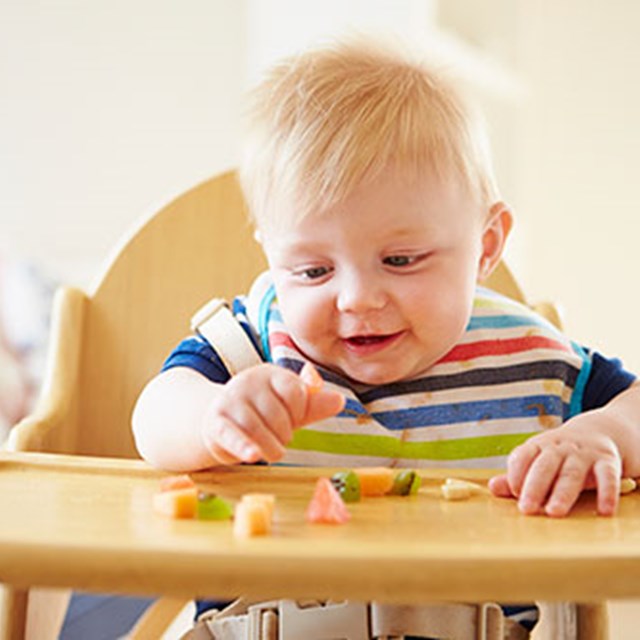
As a parent or caregiver, you constantly monitor your child as they grow and develop, checking off important milestones to ensure they are on the path to health and wellness. But what do you do if you suspect your infant or toddler may have a food allergy? According to Food Allergy Research and Education, about one out of every 13 children is allergic to at least one food item, with about 40 percent of those children having experienced a severe, life-threatening reaction.
The big challenge for most parents and caregivers is the fact that allergy symptoms do not happen until a child has had a particular food for the first time. That’s why it’s very important for parents and caregivers—as well as teachers, babysitters and other adult family members who spend time with a child—be on alert for signs of a food allergy.
Most Common Food Allergies
The foods that most commonly cause allergic reactions include the following:
- Peanuts and tree nuts (including walnuts, almonds, cashews, pistachios)
- Cow’s milk
- Eggs
- Fish and shellfish (such as shrimp and lobster)
- Soy
- Wheat
Defining Allergic Reactions and Symptoms
An allergic reaction to a particular food causes the immune system to overreact, producing antibodies to the food item as if it were a virus or other dangerous foreign invader. The immune response is what produces allergy symptoms that can affect a child’s breathing, intestinal tract, heart, and skin. If a child displays an allergic reaction to a particular food, one or more of the following symptoms will develop within a few minutes to an hour after eating the food:
- congestion, runny nose
- cough
- diarrhea
- dizziness, lightheadedness
- itching around the mouth or ears
- nausea
- red, itchy bumps on the skin (hives)
- red, itchy rash (such as eczema)
- shortness of breath, trouble breathing
- sneezing
- stomach pain
- strange taste in the mouth
- swelling of the lips, tongue, and/or face
- vomiting
- wheezing
Because a young child cannot explain their symptoms like adults can, parents and caregivers may have to figure out what their child may be feeling.
Signs that a child may be having an allergic reaction include them saying things like:
- “There’s something stuck in my throat.”
- “My tongue is too big.”
- “My mouth itches.”
- “Everything is spinning.”
In some cases, a child can develop a severe allergic reaction called anaphylaxis, especially in response to foods like peanuts and shellfish. If your child has trouble breathing or swallowing after eating, call 9-1-1 immediately for emergency medical help.
Signs of anaphylaxis include:
- chest pain
- confusion
- fainting, unconsciousness
- shortness of breath, wheezing
- swelling of the lips, tongue, throat
- trouble swallowing
- turning blue
- weak pulse
Parents of small children with severe food allergies should have an epinephrine (adrenaline) auto-injector with them at all times in case they have an allergic reaction. Both the child, as well as parents and caregivers, should learn how to use the injector in case of an allergic reaction.
Food Allergy Prevention and Food Intolerance
Remember, the only way to prevent an allergic reaction is to avoid contact with the food that causes the problem. Therefore, it is very important to learn to read food labels if your child has a food allergy. Since the reactions can be fatal, parents and caregivers should keep emergency kits containing epinephrine at home, school, and in a backpack if you're traveling.
Also be sure to educate others about your child's food allergy, including family members, babysitters and teachers/administrators at your child’s school. In addition, if a child is allergic to a particular food, he or she should wear a medical ID bracelet or necklace identifying a food allergy.
Finally, sometimes a child may simply have an intolerance to a particular food that causes such digestive system reactions like lactose intolerance or sensitivity to gluten or food additives.

